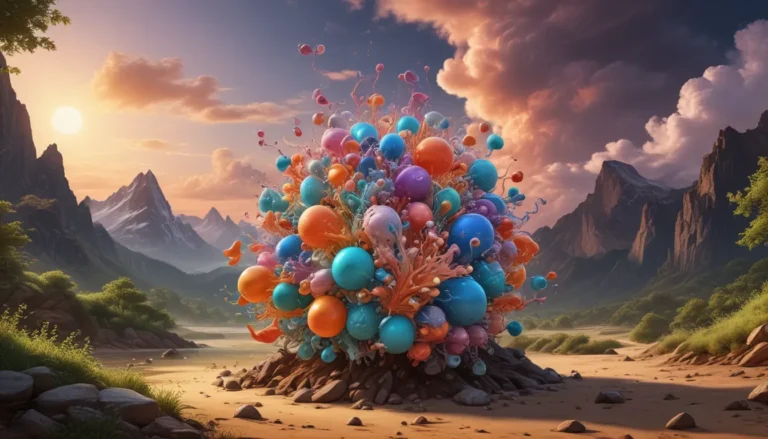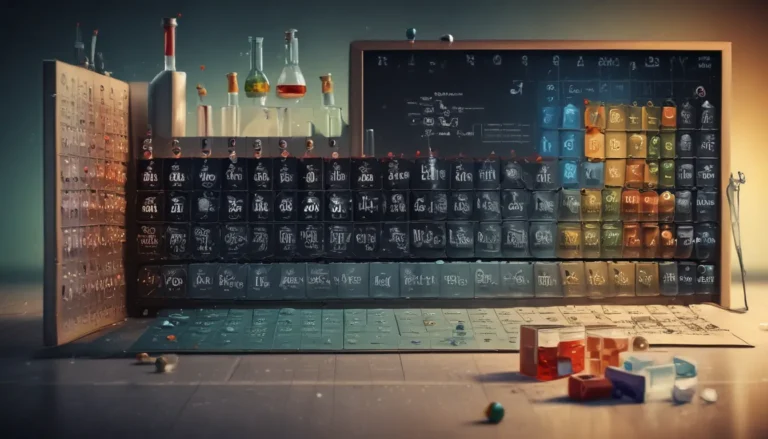A Note About Images: The images used in our articles are for illustration purposes only and may not exactly match the content. They are meant to engage readers, but the text should be relied upon for accurate information.
Are you ready to dive into the captivating realm of host-guest interactions? In the fascinating world of chemistry, these interactions between host molecules and guest molecules are not only intriguing but also play a crucial role in various fields such as drug design, supramolecular chemistry, and materials science. Let’s explore eight extraordinary facts about host-guest interactions that will unravel the complexities and wonders of this subject.
Unveiling the Dance of Host-Guest Interactions
- Host-guest interactions are akin to a dance where both partners influence each other’s moves, shaping behaviors and manipulating for their own benefits.
- Chemical signals serve as the secret language of host-guest communication, conveying intentions, recognition, and availability, ultimately shaping ecosystems and driving coevolution processes.
The Influence of Guests on Host Behavior
Did you know that guests have the remarkable ability to influence the behavior of their hosts? Whether through verbal cues, body language, or subtle changes in their environment, guests play a significant role in shaping how hosts behave.
The Symbiotic Nature of Host-Guest Relationships
In many cases, host-guest interactions form mutually beneficial relationships. From the symbiotic association between bees and flowers to the partnership between humans and gut bacteria, these interactions are essential for the survival and well-being of both parties involved.
The Art of Hosts Manipulating Guests
Some hosts have evolved mechanisms to manipulate their guests for their own advantage. This manipulation may involve altering the behavior or physiology of their guests to enhance their reproductive success or gain access to valuable resources.
Guests Exploiting Host Resources
Conversely, guests may exploit their hosts’ resources without providing any benefits in return. This parasitic relationship can be observed in species such as parasitic wasps and fleas, where guests rely entirely on hosts for survival.
The Evolutionary Journey of Coevolution
Long-standing relationships between hosts and guests can lead to coevolutionary processes. This evolving dynamic means that the characteristics and behaviors of both parties change over time in response to each other, resulting in a dynamic interaction.
The Role of Chemical Signals in Communication
Chemical signals are crucial in facilitating communication between hosts and guests. These signals convey valuable information about availability, intentions, and recognition, establishing compatibility between partners.
Shaping Ecosystems Through Interactions
Host-guest interactions have profound effects on entire ecosystems. The presence of a particular host species may attract specific guests, ultimately impacting the abundance and distribution of other species within the ecosystem.
Long-Lasting Connections Between Hosts and Guests
In some instances, hosts and guests form enduring relationships that span generations. Whether it’s the bond between corals and their symbiotic algae or certain bird species and their preferred nesting sites, these enduring connections offer a fascinating study of longevity.
Conclusion: Unraveling the Mysteries of Host-Guest Interactions
In conclusion, host-guest interactions are a captivating subject in chemistry, offering insights into various fields such as drug delivery systems, catalysis, and molecular recognition. The study of these interactions has paved the way for groundbreaking research and innovations across industries.
As scientists continue to explore the complexities of host-guest interactions, we can anticipate remarkable discoveries and advancements. The interplay between hosts and guests presents new avenues for innovation and endless possibilities for exploration.
FAQs: Exploring Host-Guest Interactions
-
What are host-guest interactions?
Host-guest interactions involve non-covalent interactions between a host molecule and a guest molecule, often through forces like hydrogen bonding and electrostatic interactions. -
Can host-guest interactions be studied experimentally?
Yes, various experimental techniques such as spectroscopy and X-ray crystallography can be used to study host-guest interactions, providing valuable insights into their nature and dynamics. -
How do host-guest interactions contribute to drug delivery?
Host-guest interactions can aid in targeted drug delivery systems by encapsulating drugs within host molecules, allowing for controlled release and enhanced efficacy. -
Are host-guest interactions reversible?
Depending on the strength and nature of the interactions, host-guest interactions can be reversible, particularly involving weaker forces like van der Waals interactions. -
Are host-guest interactions limited to organic compounds?
No, host-guest interactions can involve both organic and inorganic compounds, expanding the scope of interactions such as in inorganic host materials like zeolites and MOFs.
Embark on a thrilling scientific journey into the world of host-guest interactions, where you’ll uncover fascinating insights and marvel at the power and potential of this cutting-edge field. From the self-assembly of complex structures to the development of smart materials, supramolecular chemistry offers limitless possibilities for exploration and discovery.
Trust in our commitment to quality and authenticity as you explore and learn with us. Each fact we share is contributed by real users like you, ensuring the highest standards of accuracy and reliability in our content. Join us on this exciting adventure and delve into the mysteries of host-guest interactions with a wealth of diverse insights and information.






